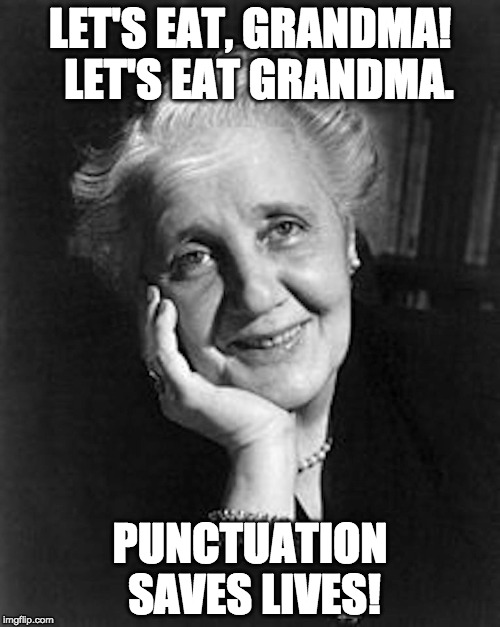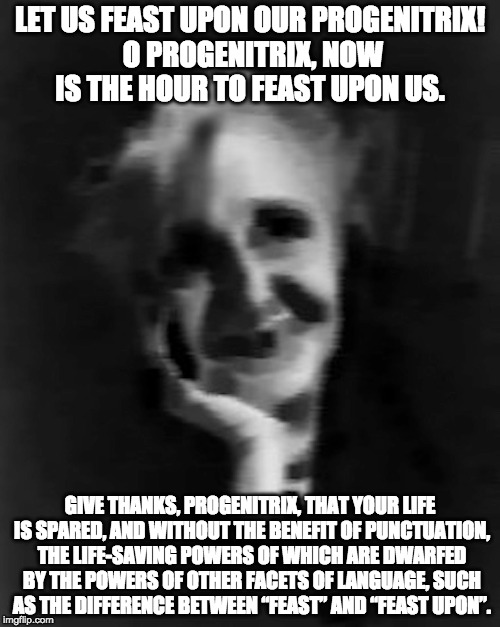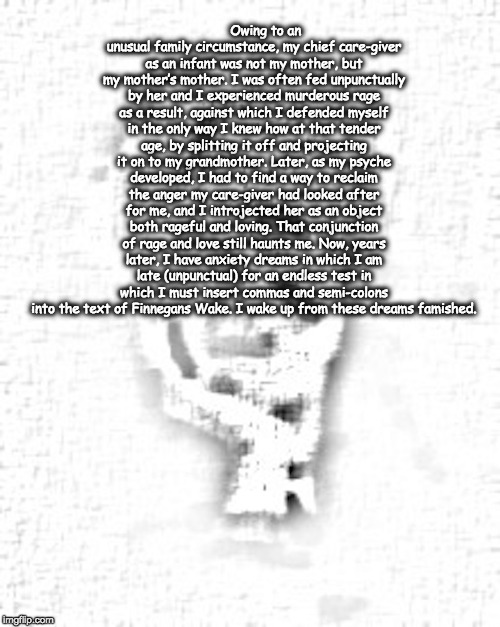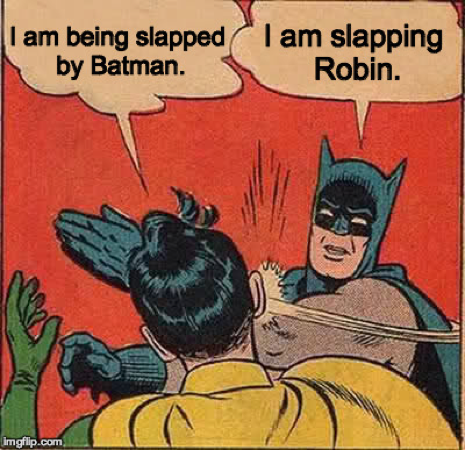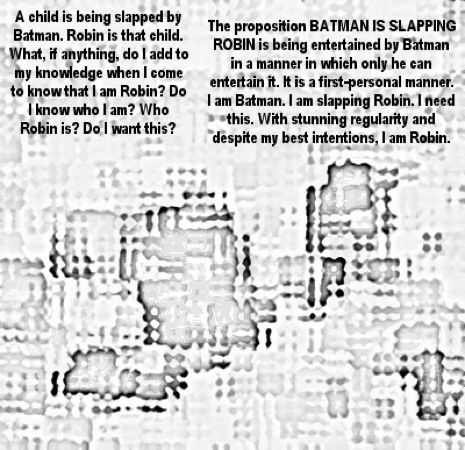In keeping with its deliberate confusion around its own boundaries, my book A Certain Gesture: Evnine’s Batman Meme Project and Its Parerga! will have not one, but two prefaces. One is by the volume’s editor, notionally distinct from the artists who made the memes, an editor who can speak without any duplicity or sense of alienation in his strange quest to elucidate the memes. The other preface is by the author of the whole business, the one who made the memes and, as a ventriloquist, the commentary on them. The author’s preface is one of the only places in the whole work where my own voice can be heard directly. Hence I attach a lot of value to it. Here is what I have written.
Like Michael Dummett and The Interpretation of Frege’s Philosophy, this is a book I wrote “without meaning to.” I had always gotten a kick out of the memes I had encountered that used the image of Batman Slapping Robin and it was a pleasurable discovery, in January 2016, that I could make them myself. I made two and thought to let the matter rest. But the meme had not done with me and, after a month, I resumed making them with an ever-increasing sense of obsession. Somewhere along the way, I began to think of them as constituting the Batman Meme Project, an indication of the growing seriousness with which I took them. So many had esoteric or personal meanings which I refused to make explicit that it came to seem like a good idea to gather them all together and explain them when I had finished. Such was the origin of this book. However, just as the memes had taken the reins from my hands, so the book too, once begun, drove me towards something much more ambitious than I had originally envisaged – nothing less, in fact, than “a new conception of philosophy, a new image of the thinker and the thought,” to quote Deleuze on Nietzsche. Just quite what this new conception of philosophy is has eluded me (and eludes me still) but I fairly early stopped even trying to spell it out to myself and became content with just doing what I was doing. I (try to) remain confident that in there, rattling about, is something like a new conception of philosophy. Perhaps its whole point is that it is ineffable.
I conceive of the book under three principal metaphors: free association, the cabinet of curiosities, and the folly. The memes and the book were all composed during my psychoanalysis and they and the analysis became inextricably bound up with each other. The great pleasure I took in memes using this image was clearly indicative of underlying psychological processes and it didn’t take long for them to surface as I talked about my project. Batman and Robin, in turn, gave me a lens through which to come to understand parts of myself. (And it emerged, interestingly, that they had deep roots in my life.) At the same time, in the analysis, I was struggling with free association. It is widely recognized, by both patients and analysts, that it is remarkably difficult to pull off, despite its seeming that there should be nothing easier. But what was difficult on the couch was, by contrast, easy at the keyboard and I allowed myself, in writing this book, pretty much to be led wherever my mind took me and to worry about what, if anything, it all meant later. Writing with this kind of freedom is one big way in which my work on this book is so different from my work in a more traditional philosophical vein. I am also happy for the book as a whole to present itself as a kind of symptom, apt for interpretation of whatever kind anyone wishes to employ. Everything anyone thinks about it and me is likely to have some truth to it.
One of several books that have profoundly influenced my own writing here is W.G. Sebald’s The Rings of Saturn. Sebald, in that book, discusses Sir Thomas Browne. The work of both of these authors is often on the model of a cabinet of curiosities, a collection of eccentric and interesting things that form a unity through no other principle than that of having been collected by a given person. So too, in my book, I have put on display a lot of the detritus of my mind, detritus that I have accumulated through frustrated ambitions to scholarship and a broad but shallow learning. Perhaps most of this detritus is junk but some, I venture to hope, may have a little value.
The folly, to me, stands for a project that ostensibly has little point, that is the product of obsession, that is labored on in obscurity for a great length of time but which, if completed, is magnificent simply because of its excess and the fact that it exists despite the inauspicious signs governing its protracted birth. Whether this book does have little (or any) point, and whether it is in any way magnificent, must be left for others to determine. But surely enough, I have labored on it in obscurity for many years, in the grip of an obsession. As my principal avenue of philosophical research for the last six years, it has been next to impossible to give it the exposure which comes naturally to more conventional work in progress. I have consequently lacked almost all forms of feedback and external validation and that, as we know, is bound to drive one a little crazy. This preface marks the moment at which I hope to emerge from obscurity and present my little folly to the light of day.

